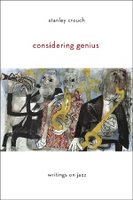
The House That Trane Built: the Story of Impulse Records
By Ashley Kahn
W.W. Norton
0-393-05879-4
Art and commerce are typically presumed to be in opposition. Yet for a music label, publishing house, or film studio to be successful, artists and business people have to collaborate. That is exactly what happened at a very high level for fifteen years during Impulse Records’ heyday, as Ashley Kahn chronicles in The House That Trane Built.
Known for its distinctive orange and black gatefold covers and its exclamation point logo, "Impulse!" became a favorite label of jazz collectors. While John Coltrane was undoubtedly its signature artists, the foundation was laid by another legend, Ray Charles.
As Coltrane is credited with building Impulse, Ray Charles is credited with establishing its parent company ABC-Paramount, where he had crafted a legendary deal allowing him complete artistic autonomy. However, given his pride in his jazz roots, Charles was more than amenable to launching ABC’s jazz imprint. As Kahn quotes Charles: “But with jazz—oh yes—with jazz you got to compose as you go . . . I suppose that’s why I’m always proud I can play jazz and why it isn’t any accident that I’ve always wanted to make jazz records and have a true-to-life jazz band.” (p. 36)
Charles cut Impulse’s first LP Genius + Soul = Jazz, which yielded one of the labels only two nationally charting singles, “One Mint Julep.” (Later Milt Jackson would record two versions of the tune on his under-rated Impulse album Memphis Jackson). Despite the critically role he played in establishing impulse, Charles would modestly demur: “I’m not gonna blow no horns man. That’s nice if they want to think that way.”
Kahn reports: “a $10,000 advance for the first year, with two-year options that rose to $20,000 annually thereafter,” were the terms that secured Impulse’s first exclusive signing, John Coltrane (p. 48). It proved to be a wise investment.
The man who signed Coltrane, Creed Taylor, produced one album with him, Africa/Brass, after which he was recruited by Verve records. Much of the book is devoted to the close working relationship between Trane, and Taylor’s successor, Bob Thiele, a swing aficionado whose ears were about to be stretched by Coltrane. According to Thiele:
“I don’t think I was at Impulse more than a week when we decided to record Coltrane live at the village Vanguard . . . That first night, as I recall, I was pretty shook up; I was confused. But by staying involved, the music began to make sense to me.” (p. 66)
As Coltrane would continue to evolve with the avant-garde movement, he would champion younger players, like Archie Shepp and Albert Ayler. Impulse became the only major label to record the free jazz movement in a commercially viable way. Often it involved highlighting Coltrane’s influence, as was the case with Shepp’s debut, Four for Trane. As Shepp explains: “Bob Thiele made the stipulation that all the songs had to be written by John. I had to use Trane’s music.” (p. 120)
With Coltrane successfully shoehorning avant-garde artists, many adopted by the Black Power movement, onto Impulse, the label developed a more militant reputation. None would be more strident than Charlie Haden, whose one-off LP Liberation Music Orchestra, featured Communist ballads from the Spanish Civil War and originals like “Song for Che.” Yet as arranger Carla Bley recalls: “none of the guys in the band shared Charlie’s viewpoints. It was just a gig.” (p. 202)
Kahn convincingly argues Impulse was a unique label, a subsidiary of a major, that acted like an indy. House is an appealing book as a physical object as well, produced with bold typography, photos and sidebars. He intersperses the text with profiles of many specific LPS, some famed like A Love Supreme, others overlooked like Howard Roberts’ Antelope Freeway.
The LP discography is generally good, but one would have liked to have seen original 45’s, those not contained within albums, included as well. (For instance, Larry Frazier, presumably the guitarist who worked with Jimmy McGriff recorded 45-205 “Before Six” & “After Six” and then was dropped from the label. One wonders what the story was behind his short tenure.)
Like Blue Note LPs featuring Reid Miles designs and Francis Wolff’s photography, Impulse records, with their bold black and orange, and striking photography by the likes of Pete Turner and Chuck Stewart became sought after collector items. Like classic Blue Notes, the music inside the Impulse grooves was as strong as their packaging. Kahn recounts the Impulse story from both the commercial and artistic perspective, showing even-handed respect for those involved on each side of the business.













